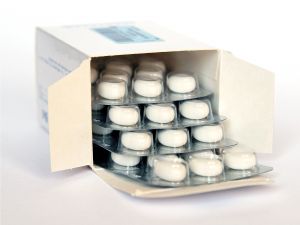
Merck, the manufacturer of the bone-loss medication Fosamax, has recently been ordered to pay $285,000 to a woman who suffered osteonecrosis (dead jaw) as a result of taking this drug. Reuters reports that the plaintiff suffered from bone disease and delayed healing after a routine tooth extraction. The jury decided in favor of the plaintiff, citing that Merck failed to adequately warn the patient of the risks involved with the product.
In fact, it has been proven that usage of Fosamax is linked to developing osteonecrosis. This condition, often called dead jaw, occurs after dental work or some other procedure in which the jaw bone might be exposed. After infection with osteonecrosis, surrounding tissue begins to erode, blood flow to the jaw stops, and tiny breaks can occur which lead to collapse of the jaw bone.
Additionally, random bone fractures can occur while taking this medication. Femur fractures are an especially common ailment that users of this drug may encounter. Researchers have suggested that Fosamax is linked to bone fracturing during low impact repetitive force, but some people claim that fractures occurred in the absence of even a fall. Drugwatch notes that women have reported simply turning their bodies the wrong way, coming to a short stop in the car or simply walking and suffering a broken femur.
Fosamax is also linked to several other side effects. One potentially dangerous side effect is the risk of developing esophageal problems. Patients might develop irritation, inflammation, or bleeding ulcers in the esophagus. Esophageal problems such as esophagus bleeding, erosion, and perforation may occur. These side effects have even been linked to esophageal cancer. Low blood calcium may also occur as a result of taking Fosamax. Appendage spasms, muscle cramps, abdominal cramps, soft bones, nausea, fatigue, muscle weakness, and even seizures are possible in the event of low blood calcium. Severe bone, muscle, and joint pain can occur within days of taking the drug.
According to the Jere Beasley Report, there are already over 3,000 cases against Merck alleging either development of osteonecrosis or femur fracture. While the femur fracture cases have yet to begin, at least two juries have decided in favor of victims of osteonecrosis. With the most recent victory of $285,000, Fosamax suits may only continue to pick up speed. It’s not too late to file your claim if you have suffered adverse effects after using Fosamax; contact Borchardt Law Firm today.
—–
 Fort Worth Injury Lawyer Blog
Fort Worth Injury Lawyer Blog







